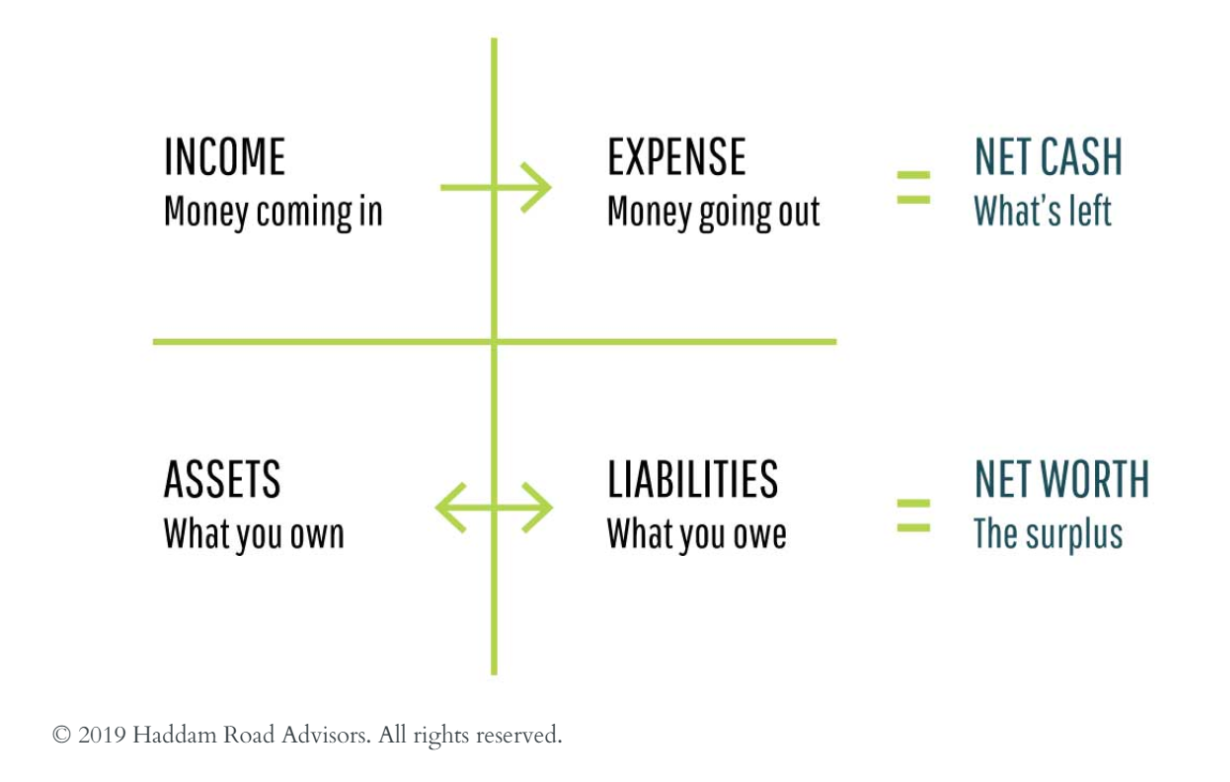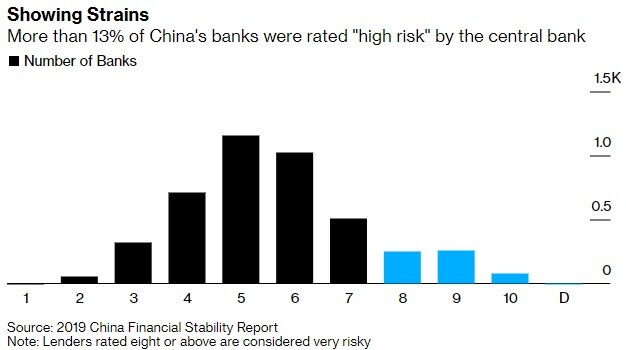
The S&P 500 has reached new highs! Time to celebrate? Equity markets are said to climb a wall of worry so my first thought is ‘what makes up the wall of worry for 2020’? Before reading onward please note I am an optimist and believe in the power of free capitalist markets but prudent risk management starts with asking the question ‘what could go wrong’. So here are five bricks in my wall of worry for 2020:
-
Delinquencies and default rate in the US.
The rate of business loan delinquencies and defaults have been historically low in the last few years in large part to the extremely low level of market interest rates. This race to the bottom has been engineered by central banks across the globe and has significantly lowered the consequences of over-leverage in the marketplace. Having said that the level of defaults in 2019 doubled in relation to 2018 from 1.5% to 3.1%. This is a cause for concern but looking below at the historical default rate for higher yielding companies puts the current benign economic environment in context. 5% in 2020 could be worrying. A small brick in the wall...

And now a much larger brick:
-
Negative Interest Rates
“How about I borrow money from you and you pay me for the privilege”? Welcome to the rabbit hole of negative interest rates. The Japanese and European Central Banks have operated a negative interest rate policy for the last few years, what are the consequences? Currently a large portion of the global bond market is currently trading with a negative yield ( about $12 trillion, and to be fair it was 17 trillion just a month ago). The Japanese are trying to ‘reflate’ their economy but inflation expectations have actually gone down since NIRP*. The technical problem is that negative rates make forward interest rates more negative and push money into the short end of the yield curve which strengthens currencies which is exactly opposite to what the central banks are trying to do.
If you want to get into the tall weeds there is a very good article on this which I will provide a link to below**. We are in the midst of the lowest interest rate environment for 5000 years (yes, there is actually research on this too ***) and there is a certain opacity in how this environment returns to normal monetary existence. Although there are signs that monetary authorities are coming to the conclusion that this policy may not be effective I can’t predict where this goes and quite frankly, no one can. Note: When central banks lose the confidence of the masses gold is your friend, it is yet to be seen if crypto-currencies would also be considered a ‘store of value’.
-
Hong Kong
The situation in Hong Kong, while not as chaotic as previous months, has the potential of becoming a geopolitical turning point. First some context. Hong Kong exists as a result of the Age of Imperialism (it is a result of the settlement from the Opium Wars) and has been a bastion of capitalism for almost 200 years*. China has, in its words, been paying homage to ‘One Country Two Systems’ but in its actions have slowly been squeezing liberties from an already agitated Hong Kong society. It’s actions have been muted to date but the perceived threat posed by capitalist societies cannot be underestimated:
Any movement of PRA troops into Hong Kong could, without hyperbole, be a trigger point for a second cold war. Foreign capital flight from China would be sudden and perhaps mandated by Western Governments. Escalation would be inevitable and financial markets would react negatively and suddenly, emerging markets would plummet. The West would have to respond with greater naval presence in the Taiwan Strait and any number of flashpoints are possible.
Hong Kong is an important symbol and balancing point for the West and China understands this. They are already searching for options and just announced a program to make Macau a ‘financial center’**. The probability of a military take over in Hong Kong is extremely low but history isn’t always logical. For more context on the scale of opportunity in China read:
https://haddamroad.com/insights/why-does-china-matter-scale
-
China bank defaults
In the last 6 months 3 regional banks have failed in China, the authorities have moved swiftly to shore up these events but is it a sign of deeper problems in their economy? I covered this issue in a recent post, take a look:
https://haddamroad.com/insights/invest-history-rhymes
The level of corporate defaults has risen as well:In context this is 90 Billion Yuan of defaults in a 6.6 Trillion yuan market so it literally is a relatively small amount. But corporate defaults are one thing, bank failures entirely another. One can be dealt with by restructuring out of the public eye, the other directly involves the public. Did I mention gold?
-
Repo, repo, and repo.
The graph below shows the level of repurchase agreements entered into by the Federal Reserve over a given week Financial entities undertake these transactions with the Fed when they have assets (US Treasuries in this instance) but need cash to finance a given need usually at the end of a quarter to adjust balance sheets. The Fed receives the bonds as collateral and loans the short term funds. Anomalies in this market can be among the first signs of systemic distress. Between 2002 and 2008 the repo market chugged along at a certain pace and then came Bear Stearns and Lehman Brothers, hence the spike in the need for ‘liquidity’. When quantitative easing showed up this wasn’t needed anymore hence the activity level cratering to zero.
So the Fed tapers in 2017-18 and all stays quiet, then in September of this year the repo market spikes out.. of.. nowhere... . The Fed did respond with a massive repo operation (where the red arrow is) but the most worrying issue here is that they literally didn’t see this coming. Who’s watching the fort? I keep hearing comments about how the Fed is supplying ample funds to cover any year end needs but the fact of the matter is they dropped the ball in a really basic way. When this plumbing springs a leak, the whole market can get flooded. It isn’t an ‘unknown unknown’ any longer and a newly vigilant Fed should be hyper-aware of the situation.

So there are my five bricks in the wall of worry for 2020, please do not go to Costco and buy 3 years worth of dried goods after reading this; these risks have been and will be present in every economy, they just look different from the risks of today. And through it all, the US stock market has climbed a wall of worry to a historic new high. My job is to help my clients navigate up and over the wall of worry.
I enjoy working with clients who want to understand their finances and be actively involved in shaping their future. If you would like to hear the “5 reasons to stand up and cheer for 2020” please give me a call.
© 2019 Haddam Road Advisors. All rights reserved.
Brian Kearns, CPA
Haddam Road Advisors
Ph: 312 636 3067
NOTE: This is being provided for informational purposes only and should not be construed as a recommendation to buy or sell any specific securities. Past performance is no guarantee of future results and all investing involves risk. Index returns shown are not reflective of actual performance nor reflect fees and expenses applicable to investing. One cannot invest directly in an index. The views expressed are those of Haddam Road Advisors and do not necessarily reflect the views of Mutual Advisors, LLC or any of its affiliates.
Investment advisory services offered through Mutual Advisors, LLC DBA Haddam Road Advisors, a SEC registered investment adviser.
Negative Interest Rates:
**https://www.cumber.com/cumberland-advisors-market-commentary-nirp-lagarde-trump-dickens-holidays/
*** https://www.businessinsider.com/interest-rates-since-3000-bc-2015-2Hong Kong:
*Here’s some great places to learn more about Hong Kong:
https://en.wikipedia.org/wiki/History_of_Hong_Kong
https://www.bbc.com/news/world-asia-china-48607723
** Macau: lessons for Hong Kong from Beijing’s ‘good student’. https://www.ft.com/content/402f0202-1c07-11ea-9186-7348c2f183af
Wall of Worry picture: Wall Photo by MESSALA CIULLA from Pexels / Microsoft emoticon ‘Worried’
- April 2025 (4)
- March 2025 (2)
- February 2025 (1)
- January 2025 (8)
- December 2024 (1)
- November 2024 (8)
- October 2024 (6)
- September 2024 (1)
- December 2023 (1)
- November 2023 (1)
- October 2023 (1)
- August 2023 (1)
- May 2022 (1)
- February 2022 (1)
- September 2020 (1)
- August 2020 (2)
- June 2020 (1)
- February 2020 (1)
- January 2020 (1)
- December 2019 (4)
- November 2019 (2)
- October 2019 (1)
Subscribe by email
You May Also Like
These Related Insights

Planning Basics: The 5 things you can do with your income

Why Does China Matter? Scale.


